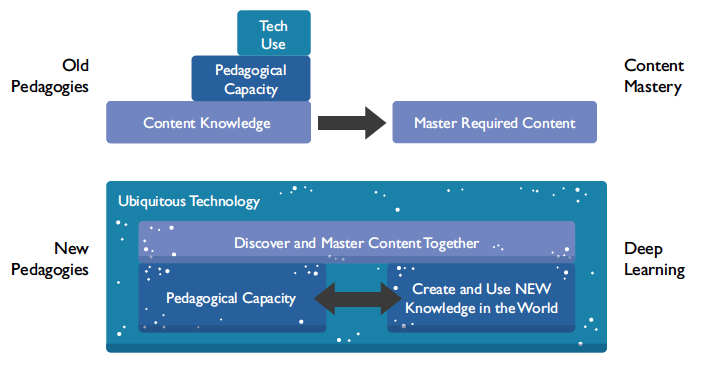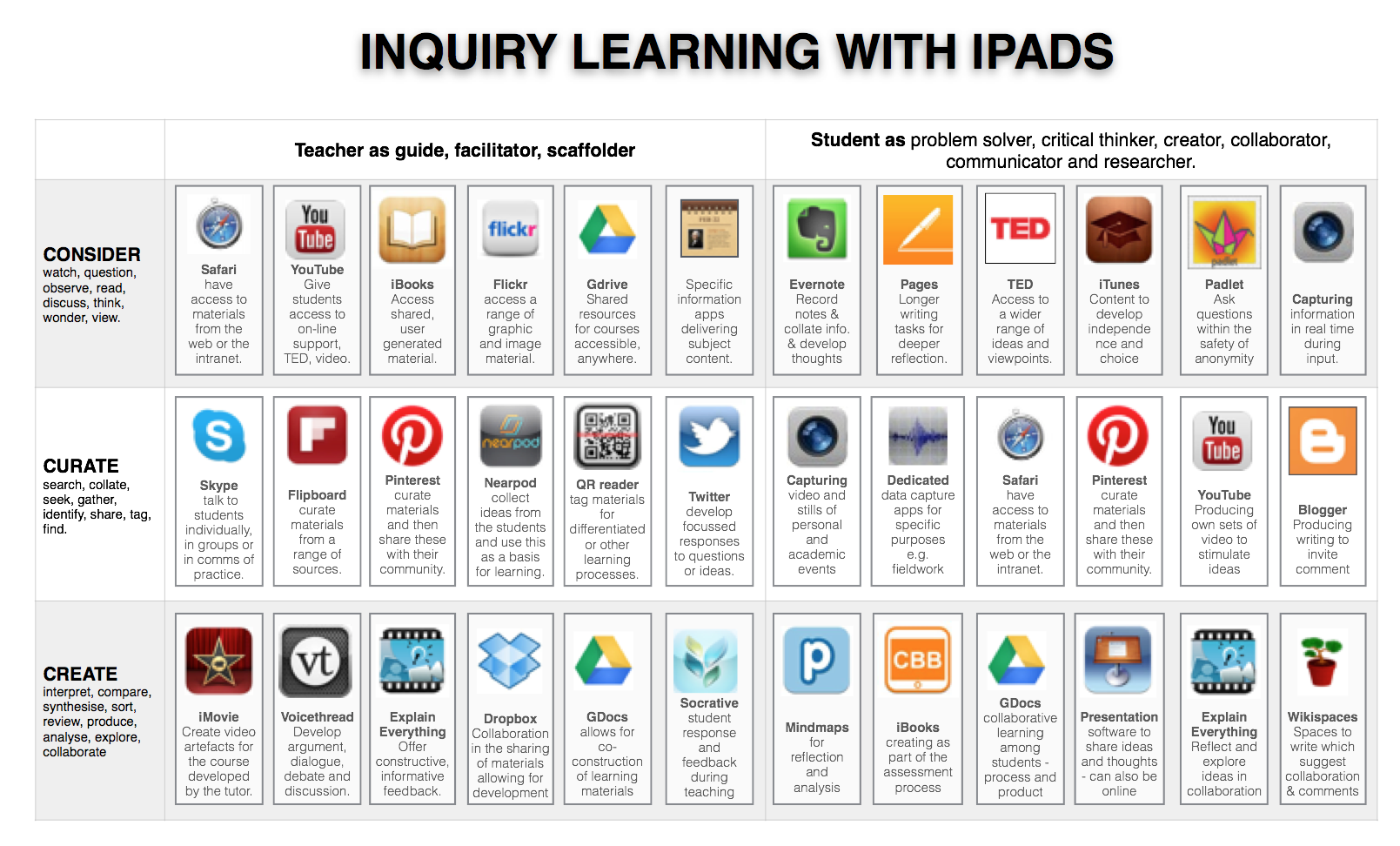 |
|
 |
 |
 |
|
| iPads and Teacher Education: Using iPads |
 |
| You are here >> Tablets and Teaching Education >> Using iPads |
 |
| About using iPads in Initial Teacher Education |
Why use mobile technology
Mobile technologies are offering a paradigm shift in the classroom. These technologies give three key affordances to the student:
- Mobility: These are devices which can be used anywhere, many of them (smartphones, mini tablets and iPods) can be put into a pocket and the others (tablets) can be put into a bag or satchel. The battery life means that as long as they are charged overnight they can all of the school/college day (and often longer). Their "always on" nature means they are ready for use immediately and so can be, and often are used, just for a few seconds or minutes.
- Social Interactivity: The device is much more social than other computing devices, the touch screen and other simple interfaces make the device accessible to very young and to disabled users, the "flatness" making sharing, passing around and collaboration easier. The growing number of devices that can be connected via Wifi or Bluetooth mean that the device is becoming a staple in many professional environments.
- Customisation: The number of applications available is multiplying almost exponentially. There are about 3/4 of a million applications (as of June 2013) of which just a tiny, tiny percentage appear on these pages. Not only are developers producing apps at a phenomenal rate but the software to produce your own apps means that this is relatively easy. As well as the software applications these devices tend to come with still and video camera capability, audio input and output, connectivity and motion sensors.
These affordances adapted from: Kearney, M (et al) (2012) Viewing mobile learning from a pedagogical perspective |
When we think about using the iPad consider the 4 C's of technology use:
- Curation: Making collections of resources acting as a digital curator for others - applications such as Dropbox, Pinterest. GoogleDrive, Good Reader, ReferenceMe ...
- Creating: Making new artifacts of learning and teaching, iMovie, Pages, BookCreator ComicLife, Viddy, Prezi, NearPod, ScreenChomp Aurasma, iTimelapsePro
- Communicating: Apps that let you bring others into your learning space, Skype, Facetime, Twitter, Facebook
- Collaboration: Apps that facilitate working together GoogleDocs, MindMap, Mindmash, Edmodo, Popplet, Explain Everything
|
| iPadagogy ... |
| The key thing about the iPad is to challenge the models of teaching that we currently have and to reinvent the nature of teaching and learning for the C21st. This idea of moving to a padagogy of learning is central to the way we think about these technologies - we move away from a didactic content mastery model to a deep learning model. |
 |
| More about the teachers' and the pupils' roles in this model |
| Fullan, M & Langworthy, M (2014) A rich seam: how new pedagogies find deep learning, Pearson |
More on these ideas and some models of learning that fit these. |
| References |
Some research on the use of iPads
- Burden, K; Hopkins, P; Martin, S; and Male, T (2011) - iPadScotland Learning Project: An evaluation - download
- NAACE, The iPad as a tool for education, A study of the introduction of iPads at Longfield Academy, Kent - download
|
| Inquiry Based Learning with iPads |
| A key driver for the iPads was the desire to move to a more inquiry based learning model and away from a didactic model - this devices and the installation of fast wifi has enabled this to happen - click on the graphic for a bigger (PDF) version. |
 |
| Teacher Role |
The tutor has at range of applications under the banners of:
consider (materials for the student to access, consider, think about or view - used before the session in order to stimulate ideas, knowledge and curiosity),
curate (applications used to create resources of materials for use: before the session in order to extend ideas and knowledge,in the session in order to develop ideas and thinking or after the session in order to give resources) and
create (application that can be used during the session for collaborative development and stimulation or after the session in order to create artefacts of learning)
|
| Student Role |
The student has at range of applications under the banners of:
consider (applications that can be used before or during the session in order to take notes, record ideas, gather materials, develop thinking)
curate (applications that can be used before the session in order to order and structure thinking, during the session in order to develop ideas or to identify areas for further study or after the session in order to develop ideas seeded during the session)
create (applications that can be used during the session to create artefacts of the learning or after the session to create objects for further study or objects for assessment).
|
|
| Back to top |
 |
Website developed by  web
web |
Last Modified: Sept 11th, 2019 |
|
|
|








